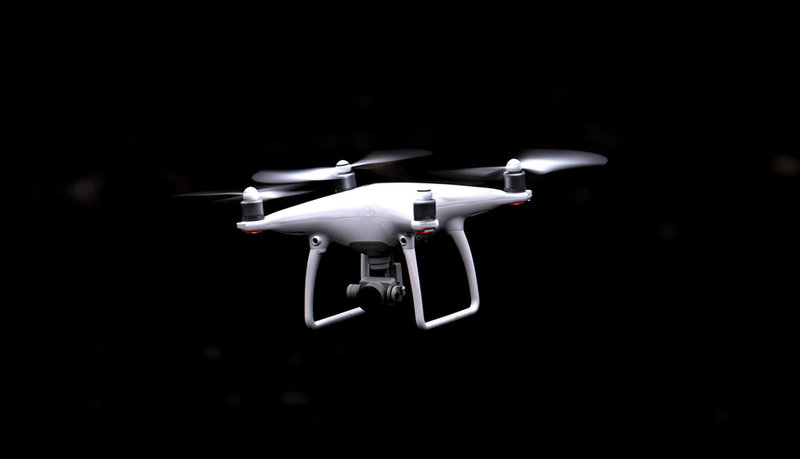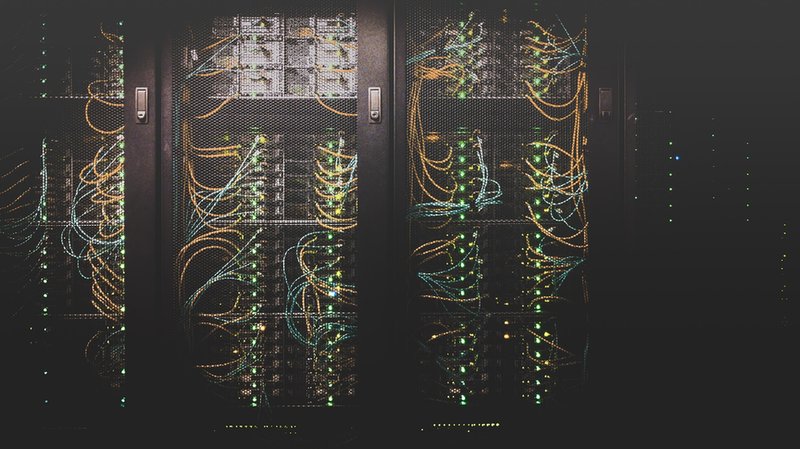Politics and Policy
The Next Huawei:
Future Targets in the US-China Tech War
Now the US has finished its skirmish over Huawei, it is turning its attention to new battlegrounds in the US-China tech war. Ellen Daniel explores the companies and industries that could be caught in the crossfire next
This time last year, Washington and Beijing were locked in a bitter tariff battle, with both sides imposing trade tariffs on a long list of items imported from the other.
Now the ongoing tensions between the two nations have taken on a different form, which some are referring to as the “tech war”.
So far this has primarily concerned Chinese companies Huawei and TikTok.
The US has banned federal agencies from using Huawei products on national security grounds, along with claims that Huawei has stolen US companies' intellectual property, and US politicians threatening to ban TikTok over the possibility that user data could be handed over to the Chinese government. Both companies deny the allegations.
In August the Trump administration published an executive order giving TikTok parent company ByteDance, along with Tencent, owner of popular messaging app WeChat, 45 days to find an American buyer for their US operations or face a ban. After much speculation, this resulted in Oracle becoming TikTok's "technology partner", which is likely to see the enterprise company manage TikTok's US user data - although the specifics of the arrangement remain unclear at the time of publication.
The fortunes of Huawei and TikTok have garnered significant public attention, but the current US crackdown on Chinese tech will undoubtedly extend beyond the two Chinese tech giants.
With TikTok's fate in the US still shrouded in uncertainty, and Huawei dealt a significant blow by the news that its equipment would no longer be used in UK networks, what other companies could be caught in the crossfire of the tech war?
The tech war and the supply chain
China is a key pillar of the tech supply chain, and changes to it can be felt around the world.
The interdependence of Chinese and Western supply chains was evident at the early stage of the Covid-19 pandemic, when the closure of factories in the country saw consumer electronics companies such as Apple, whose iPhones are almost entirely made in China, facing supply shortages.
Other items vital to the tech supply chain, such as LCDs, OLEDs and lithium cells, are also produced in China. If access to these items was impacted by geopolitical events, it would be felt across the industry - and not just limited to Chinese companies.
“While there’s no legal reason for enterprises to avoid purchasing their drones from China, the risk of potential issues being discovered later on is incentive enough.”
Last year, the US government banned the export of US technology to Huawei, and in May this was extended to include semiconductors manufactured in other countries but using US technology, creating significant hurdles for the company as the US currently dominates the global semiconductor market. The sanctions were cited as one of the reasons for the UK's decision to remove Huawei kit from its networks.
It is clear that moves such as this, and potential retaliations from China, will have ramifications on a global scale.

Image courtesy of Manny Moreno on Unsplash
IoT tech in the crossfire?
This could have a knock-on effect for numerous industries that rely on products manufactured in China, such as the internet of things (IoT).
“Whilst the recent focus has been on TikTok and Huawei, the sheer mass market capability of China will see western nations integrate, embed and use Chinese manufactured products (from chipsets to software applications) for a very long while to come yet,” Richard Cassidy, senior director of security strategy at Exabeam tells Verdict.
“Our biggest concern should be around the use of IoT devices. A significant proportion of the world’s IoT technology is either co-designed or manufactured in China; if privacy and national security has been a key driver in recent policy changes, then IoT devices should be paid very close attention indeed (drones, IP cameras, smart devices, etc.).”
“A significant proportion of the world’s IoT technology is either co-designed or manufactured in China.”
One of the companies that could be affected is DJI, a Chinese drone manufacturer that, according to CNN, produces nearly 80% of the drones used in the US and Canada.
Last year the US Department of Homeland Security issued a warning about Chinese-made drones, saying that “the United States government has strong concerns about any technology product that takes American data into the territory of an authoritarian state that permits its intelligence services to have unfettered access to that data or otherwise abuses that access”.
“While the US government has shown a renewed focus on improving its military drone programmes while reducing its dependence on Chinese-made technology, private enterprises are also feeling pressure to invest in non-Chinese drone hardware,” explains Kevin Sartori, co-founder of drone software company Auterion.
“While there’s no legal reason for enterprises to avoid purchasing their drones from China, the risk of potential issues being discovered later on is incentive enough for procurement departments to avoid investing in technology from Chinese companies altogether.”
Considering the renewed interest in drone technology prompted by the Covid-19 pandemic, Chinese drone manufacturers could soon find themselves at the centre of the tech war.

Image courtesy of Joshua Fuller on Unsplash
Clean Network: The US’ digital wall against China
The US government's attempts to guard “citizens' privacy and our companies’ most sensitive information from aggressive intrusions by malign actors, such as the Chinese Communist Party” comes in the form of the Clean Network programme.
This has been recently updated by the Department of State to ensure carriers are not connected with US telecommunications networks, removing untrusted applications from US mobile app stores and preventing US citizens' data from being processed on “cloud-based systems accessible to our foreign adversaries through companies such as Alibaba, Baidu and Tencent”.
The implications of this go beyond TikTok and Huawei, indicating the ramping up of anti-Chinese rhetoric from the current US administration.
In response, Chinese Foreign Ministry spokesman Wang Wenbin said: “We are firmly opposed to this. Their action has no factual basis.”
“Generally speaking, you could see a lot of technologies getting caught in the crossfire should this escalate.”
It is not surprising that Chinese tech giants such as Alibaba, the largest ecommerce company in the world, are the latest to be drawn into the ongoing tensions.
Although companies such as Tencent and Alibaba largely focus their cloud computing business on the domestic market, they are increasingly looking overseas.
This could create dilemmas for companies around the world that do business with Chinese corporations, particularly customers of Chinese cloud service providers.
Oliver Oram, CEO of distributed ledger firm Chainvine explains that Chinese cloud companies will likely be caught in the middle.
“Generally speaking, you could see a lot of technologies getting caught in the crossfire should this escalate,” he says.
“Healthtech companies, for example, store sensitive data and may rely on cloud storage from a Chinese corporation, rising tensions could force them to move to another cloud service provider at great expense. It will all depend on market preference in the end.”

Image courtesy of Taylor Vick on Unsplash
Fintech under threat
The fintech sphere could also get caught up in the conflict, threatening the growth of this innovation-rich industry.
Ant Financial Services Group, formerly Alipay, is the most valuable fintech company in the world and has expanded its services outside of China with a significant number of merchants now accepting the Alipay app. Last year, it acquired UK company WorldFirst for $700m.
In a report by EY commissioned by the UK government, former Economic Secretary to the Treasury Simon Kirby described China as a "key international trading partner" in Fintech. Therefore, choosing between the US and Chinese market could be damaging to UK fintech.
“Should tensions increase between the US and China, UK fintechs will have to make some hard choices between the US or China in the early stages.”
China is the largest fintech market in the world, and changes to it could impact fintech in the UK and beyond.
“I can see huge tension building in the Trading/RegTech/FX sector if a “tech war” erupts between the US and China,” says Oram.
“If a state, especially one of the largest in the world, prohibits full disclosure of information, it is effectively limiting this technology to function effectively in its jurisdiction. This then plays into international trade and could limit countries’ and businesses’ ability to comply with regulations when trading with China.
“Given the UK's first move into trading Renminbi as an offshore hub, should tensions increase between the US and China, UK fintechs will have to make some hard choices between the US or China in the early stages.
“At the moment I believe a lot of companies would like to trade with China as they make a lot of things in a nutshell, complications may arise for firms split between the two leading to loss of market penetration across the world. This scenario is the hardest for the UK as we are a trading nation and much of our fintech would be caught in the crossfire if things get nasty.”

Image courtesy of Markus Winkler on Unsplash
Automotive at risk
The ongoing tensions also threaten to derail partnerships between Chinese and Western companies in the automotive sector. The advancement of connected and autonomous vehicles has seen an influx of partnerships between automotive and software companies, meaning this could have a significant impact on the industry.
Last year, the UK Society of Motor Manufacturers and Traders and the China Association of Automobile Manufacturers announced a landmark partnership to “develop mutual understanding and cooperation between both automotive industries”, particularly focused on “connected and autonomous vehicles, low and zero emission technology and supply chain”.
“I definitely see potential for the US to get funny with software providers and the international businesses they serve in this respect.”
“Take for example Volvo, a large Swedish car company with a Chinese tech partner in the form of Geely Global,” says Oram.
“The amount of technology that goes into these cars could create opportunities for a bad actor to monitor anyone, should they get access to that car’s software. I definitely see potential for the US to get funny with software providers and the international businesses they serve in this respect.”
Another example is US electric car maker Tesla, which in February signed a deal with Chinese manufacturer Contemporary Amperex Technology to use its batteries in its vehicles.

Image courtesy of Szymon Kita on Unsplash
Scrutiny will continue
For some, the potential cyber threat posed is enough to warrant the increased scrutiny Chinese telecom and cloud companies are facing.
“State-sponsored attacks on western tech companies are on the increase and, at the same time, we see Chinese mirror brands and copycat products pop up all the time,” says Tom McAndrew, CEO at international cybersecurity consultancy Coalfire.
“Companies must wake up and realise that the cyber threat posed by nation states like China is not just a government concern. Businesses are being targeted directly so their cyber defence strategies need to be robust enough to repel an incredibly sophisticated adversary and, just as importantly, limit the damage if a breach does occur. These breaches hurt not just the company, but the overall economy.”
Ultimately, even with potential administrative changes in November taken into account, as long as tensions between the US and China continue, their effects will be felt across the tech world.
“We may find ourselves with two separate internets and technology pipelines – one for Western countries, and one based around China.”
“Looking towards the longer term, we may find ourselves with two separate internets and technology pipelines – one for Western countries, and one based around China,” says Auterion's Sartori.
“In the more immediate future we can expect to see more bans and sanctions against Chinese technology companies. While the US is no stranger to these kinds of sanctions, it will be interesting to see how more neutral European countries react to these conflicts and security concerns.”
Some have opined that this could be the start of what is sometimes referred to as the “splinternet”, a fragmented web governed by a plethora of different regulations depending on the geographic area, with businesses forced to choose whether to pursue either the Chinese or US market.
Whether or not this becomes a reality, Cassidy believes that for all Chinese tech companies, increased scrutiny is on the horizon.
“It’s reasonable to assume that any technology or application vendor headquartered out of China, especially those with executive leadership where close ties to state lay, will now be closely scrutinised in terms of security and economic risk to western nations.”
Back to top